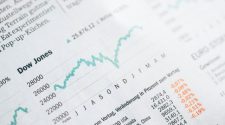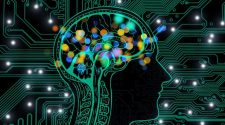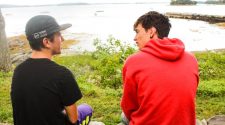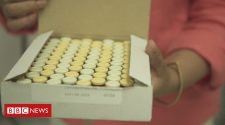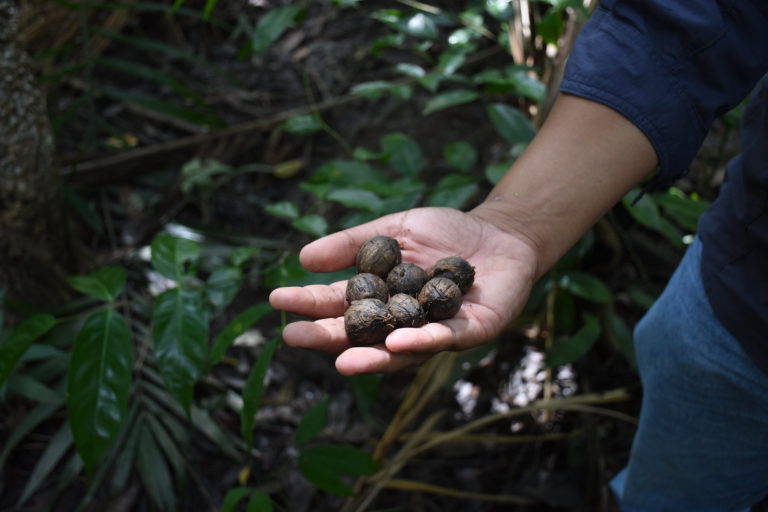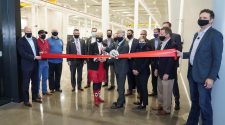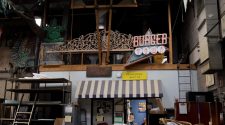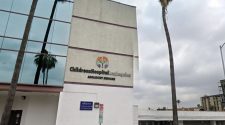- In seeking an alternative to the develop-or-conserve dichotomy that governs policymaking over the Amazon, Brazilian scientists have come up with the Amazonia Third Way, a plan to preserve the region’s biodiversity by supercharging sustainable forestry practices with technology.
- In the second half of this year, three communities in Pará state will receive the first creative laboratories — mobile units that will bring technologies such as blockchain and drones to the cocoa and cupuaçu production processes. Future laboratories will focus on Brazil nuts, acai berries, essential oils and other products.
- The project will also rely on the help of business accelerators and the Rainforest Business School to support so-called bioeconomy start-ups and offer training courses for forest communities under this new development paradigm.
Land use in the Brazilian Amazon has always been split between the legal preservation of large tracts of forest to conserve biodiversity, on the one hand, and the intensive exploitation of natural resources on the other, including activities like logging, mining, agriculture, and cattle ranching. Brazilian scientists in search of a new model for the region have come up with the Amazonia Third Way, which unites science, advanced technology, innovation and strategic planning to generate a “bioeconomy” for standing forest. It is based on products with aggregated value and socioeconomic growth for local populations.
“Producing consumer goods with aggregated value in inland regions of Amazonia means we must break paradigms,” said Ismael Nobre, one of the creators of Amazonia Third Way. He holds a Ph.D. in human dimensions of natural resources from Colorado State University, and emphasizes the need for a change in perception on how the forest should be managed. The Amazon, he said, can no longer be seen as territory for exploiting commodities, but rather as one of richness and biodiversity that are made more valuable through the use of technology.
But how can Industry 4.0 technologies such as artificial intelligence, advanced sensors, blockchain and the internet of things be applied to a rainforest?
“When we think about Amazonia, we shouldn’t just imagine the difficulties, the infrastructure and logistical challenges or vast distances that characterize the region,” Nobre said, and cited the Opportunity rover that landed on Mars in 2004. “The Opportunity robot has technology to get to Mars, perform experiments, send back results and even take selfies. Amazonia is much closer! All the technology they used on that space mission is also available to facilitate a new standing-forest economy.”
The Amazonia 4.0 project was conceived to implement Amazonia Third Way, and will come into action by the end of this year with the opening of “creative laboratories” in three communities in the state of Pará. These mobile field units can be installed in tents or on floating platforms and later disassembled and transported to other locations by truck, boat or plane. The purpose of the laboratories is to ally traditional local knowledge, scientific data and technology to equip the communities, adding value to the forest products they harvest and addressing the lack of transportation that’s one of the region’s main bottlenecks to development.
While typical commodities require complex logistics and cause great environmental impact, forest-derived products can be much more sustainable. Cocoa beans, for example, leave behind only shells and residue when transformed into chocolate bars. Essential oils are still more effective, as what before were leaves and tree trunks become small flasks with high economic value.
For these lighter products, the Amazonia 4.0 project will use drones, possibly with battery change and recharge stations at strategic locations in the forest, so that vast Amazonian stretches can be traversed. This in itself represents new local business opportunities. The drones already exist in experimental logistics operations in other countries that include uses ranging from the delivery of medicine to isolated villages in Africa, to FedEx parcel drops in the United States.
The project also analyzes options for modernizing motors on boats, the preferred vehicle for logistics in the region. “Transport by boats with diesel engines, which are the most common in Amazonia, is very expensive. But electric motors that run on hydrogen and use fuel cells like those in Honda and Toyota automobiles already exist,” Nobre said. He added the fuel could be manufactured in production units inside Amazonian communities. “We are currently trying to establish partnerships with manufacturers and hydrogen plants so we can develop a high-tech, low-impact water transport model just for Amazonia,” he said.

Digital sensors for chocolate production
The first creative laboratory, which will start operations this year, is dedicated to processing of cocoa and the related cupuaçu fruit. Both are native to the Amazon and can be used to produce items such as chocolate and cupulate, a candy made from cupuaçu beans. Because they need shade to bear fruit, cocoa trees are ideal for growing among other species in mixed farming or agroforestry. Agroforestry systems are solutions for restoring already-degraded areas and unproductive pasture to generate income for farmers and re-establish most of the services that native forests provide for water systems, the climate and biodiversity.
The cupuaçu-cocoa creative laboratory already exists on paper, its entire production chain mapped out to increment quality local production and facilitate access to consumer markets. The next phase, which will happen this year, involves physical construction and the incorporation of new technologies for control, automation, digital tracking and tech equipment adaptation to bring artificial intelligence and interconnectivity into the mix. This year will also involve educational development, including job training for local communities.
The laboratory will initially be installed in Pará communities where cocoa or cupuaçu are already produced or where their products are processed. The first three will be a rural women’s association in the municipality of Belterra, a quilombo (traditional Afro-Brazilian) community in the municipality of Moju, and a riverine community on the Acará River in the municipality of Barcarena. The mobile unit is expected to stay in each of these communities for two months and then move on to other states in the Brazilian Amazon. The idea, Nobre said, is that the results from the laboratory in operation will attract investors to fund permanent versions of the labs inside the communities.
Each lab is equipped with software allowing for end-to-end tracking along the entire production chain as part of the so-called internet of things, together with other technological aids that help control processes like the correct ripening point of harvested fruit, fermentation time and bean bagging — all essential for a high-quality end product.
For example, the lab equipment includes a digital sensor that will send fermentation temperature measurements in real time to a digital platform accessible via smartphone or tablet. Ovens equipped with sensors to detect humidity and temperature and microprocessors will be able to generate controlled heat during roasting that can lend different aromas and flavors to the final product, allowing for the production of proprietary chocolates. Plus, scanners and 3D printers will be able to create and print molds with exclusive designs for the chocolate produced in each community, allowing the bars to transmit traces of local art and culture.
The technology will also make bean-to-bar chocolate production possible through total control of the process from fruit harvest to chocolate production. This practice is meant to add value to the Amazon’s biodiversity through use of local ingredients in final products like camu-camu, a native fruit that EMBRAPA, Brazil’s agricultural research corporation, says has 60 times as much vitamin C as limes. They are calling it the “nutri-ceutic chocolate.”

Start-ups in the forest
Job training inside the communities where the laboratories are built will be carried out by a specialist from the production chain and another in business in innovative environments. Amazonia 4.0’s creators expect that government, private initiative and other third-party entities will take the lead in new actions when they see how the laboratories work. Such actions will help perpetuate the new practices inside the communities.
Nobre said there are already some programs in the region that actively seek to identify potential entrepreneurs and help them develop their ideas and businesses, making them into start-ups and accelerating company development. Some of these programs are the business incubator belonging to INPA, the National Amazonia Research Institute; the Partners for Amazonia platform (PPA); the Sustainable Connections Institute (Conexus); and the Amazonia Entrepreneurship Center (CEA).
Amazonia 4.0 will also count on help from the Rainforest Business School to consolidate the new development model. The school will launch this year in partnership with Amazonas State University (UEA), offering job training courses in diverse sectors along the production chain in the forest. The school plans to launch an MBA program focused on the bioeconomy in five years.
Amazonia 4.0 has already received most of the funding needed for construction of the cupuaçu-cocoa creative laboratory this year and the first round of local job training. As it receives funding from new sources, it will be able to increase its work along the productive chain and maintain work on other labs currently in different phases of development. The most advanced projects are the Brazil nut production chain and DNA mapping of local species. Next in line are gourmet and essential oils, acai berries, rubber and cosmetics, among others being studied.
What distinguishes Amazonia 4.0 is its potential for creating technology-based solutions together with communities and the mobility of the creative laboratories, Nobre said. “The project’s conception means the processes can easily be appropriated by other communities,” he said. “And when we have a functioning bioeconomy, people anywhere in the world will be able to benefit from Amazonia’s biodiversity. They will recognize nature’s intelligence with the knowledge that these products came from highly sustainable social and environmental production. Benefits will be shared locally, nationally and globally. And in the medium and long terms, we hope this generates a sense of added value, not just in the utilitarian sense, but an intrinsic valorization of Amazonia. An unequivocal recognition that the whole forest and its peoples have the right to continued existence, recognition that will unleash the forces of society so that this can happen.”
Banner image of murumuru seeds, from a palm species native to the Amazon whose oil is used in the cosmetics industry. Image by Franz Krämer/Sociobioamazonia (CC BY-NC).


